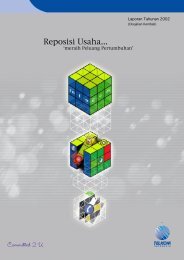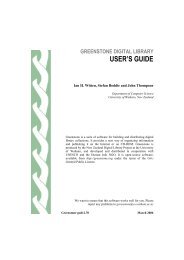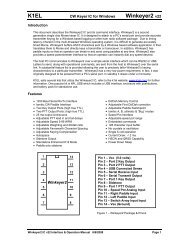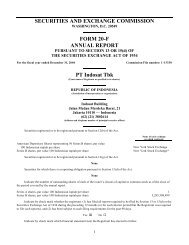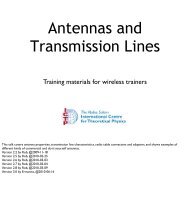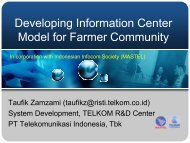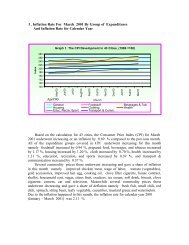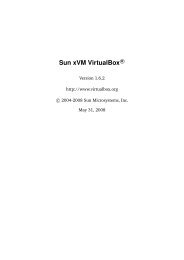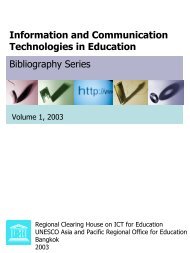Information and communication technologies in schools: a ...
Information and communication technologies in schools: a ...
Information and communication technologies in schools: a ...
Create successful ePaper yourself
Turn your PDF publications into a flip-book with our unique Google optimized e-Paper software.
• With<strong>in</strong> limits, students can solve problems of misunderst<strong>and</strong><strong>in</strong>g <strong>and</strong><br />
unsuccessful <strong>communication</strong> by ask<strong>in</strong>g questions.<br />
The disadvantages of the lecture model are that it:<br />
• encourages passive learn<strong>in</strong>g;<br />
• affords limited <strong>in</strong>dividualization; <strong>and</strong><br />
• allows limited extra-verbal <strong>communication</strong> with a limited use of the<br />
senses <strong>and</strong> channels of human perception.<br />
What <strong>technologies</strong> are <strong>in</strong>volved <strong>in</strong> the traditional lecture? And what extensions<br />
of these do we have, or can we expect <strong>in</strong> the future?<br />
The major <strong>in</strong>formation channel for the lecture is the aural one. Of course<br />
there is human voice technology – you can be tra<strong>in</strong>ed to project your voice to an<br />
audience of 100-200 people, or more. A special design of the auditorium can contribute<br />
to a lecture. Microphones, amplifiers, <strong>and</strong> other equipment can improve<br />
loudness <strong>and</strong> even acoustic quality of human speech. Students can also use microphones<br />
while ask<strong>in</strong>g questions. Install<strong>in</strong>g audio equipment for a lecture <strong>in</strong> a large<br />
room or hall can be a sophisticated task that requires a professional. One of the<br />
important issues here is to place loudspeakers (the sources of sound) <strong>in</strong> a way that<br />
students get the impression the sound is com<strong>in</strong>g from the lecturer – to amplify<br />
mutually two different channels of <strong>in</strong>formation, not to confuse them.<br />
Us<strong>in</strong>g a microphone requires proper position<strong>in</strong>g – not too far so you<br />
cannot be heard, <strong>and</strong> not so close that your voice is distorted. Surpris<strong>in</strong>gly few<br />
people today manage to use a microphone properly, <strong>and</strong> so good sound <strong>in</strong><br />
lectures is not so common.<br />
Radio microphones are useful when it is desirable to move around <strong>in</strong> a room<br />
or to pass the microphone between discussion participants. An option of us<strong>in</strong>g<br />
small <strong>and</strong> light wearable microphones simplifies the problem of proper position<strong>in</strong>g<br />
but also requires simple technical knowledge.<br />
The loudspeaker is not the only option for amplification. We can supply<br />
every student (<strong>and</strong> the teacher, if needed) with headphones. Signals to headphones<br />
can come via wires or a wireless network. A popular application of<br />
headphones is <strong>in</strong> simultaneous translation, which is not widely used <strong>in</strong> <strong>schools</strong>,<br />
although often encountered at <strong>in</strong>ternational meet<strong>in</strong>gs of researchers <strong>and</strong> others,<br />
<strong>and</strong> could be imitated <strong>in</strong> <strong>schools</strong>.<br />
ICT <strong>in</strong> Learn<strong>in</strong>g <strong>and</strong> Teach<strong>in</strong>g<br />
125




